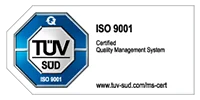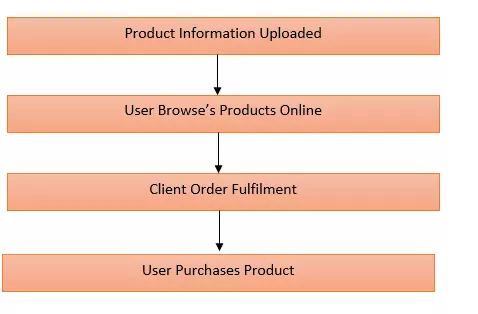



Guide to Developing an eCommerce platform
 Guide to developing an ECommerce platform
Guide to developing an ECommerce platform
I don’t think there is a person around the world that has not heard of or used some sort of e-commerce portal or e-commerce website, and if you haven’t, you have probably been self-isolating for far too long.
What is an Ecommerce website/portal and how do they work?
Now if you have been self-isolating for the past few years and as a result have not used an ecommerce portal, then this section will give you a brief look into how an ecommerce website/portal functions.
To put it simply, an eCommerce website is a platform that allows users to purchase and sell products online. In the UK alone the ecommerce sector’s revenue was 688 billion, and it’s worth is only going to increase within the next few years.
Each e-commerce website/portal will function differently, based upon users’ needs and business requirements. However, most will have a number of core subsections involved their websites journey, which is highlighted in the graph below:
So now that you understand how an e-commerce platform or e-commerce website works, join us as we take a look at the steps you will need to take to build your own ecommerce solution.
Resources You Will Need:
Before you can dive straight in and start developing your platform there will be several resources you will need to purchase before or during the development process.
- Domain Name
- Website hosting software
- A CRM system you can integrate with your website to manage customer orders
- A payment gateway that can be integrated with your website
- Social media profiles, so that you can start promoting your brand
Step 1: Start with your strategy
To ensure that your e-commerce platform or e-commerce website is a success, before you have built it you will need to develop a comprehensive strategy, where you should consider every aspect of your solution.
You will need to think about your platform requirements in line with your customers’ requirements, to help develop the most appropriate solution. For example, what are your delivery times, and what are your customers expected delivery times. P.S you can also look at your competitor’s delivery times to find out how you compare to them. You should also consider your pricing and promotion models, during this phase.
Step 2: Purchase Your Domain Name
Did you know that studies have shown children are able to recognize and understand brands before they can even read? For example, most children are able to recognise ASDA’s logo and slogan before they can read it.
This research highlights the pure power that a brand can hold within a person’s life. It’s important that you choose a custom domain and brand name that has meaning behind it and will help to spread the mission and vision of your business.
You can use tools such as 123 Reg or Ionos to purchase your domain name, the average domain name will cost you anywhere from £0.99 to £30 a year depending on where you purchase it from.
Step 3: Plan Your Customers Journey Map
Think about the layers that your potential customers will go through, when they are trying to make a decision and how your platform will help them during each stage. For example, during the purchasing stage’s you will need to make sure it’s easy for your customers to purchase the products they want.
Think about your customer post-purchase service, as it should be a priority for any eCommerce business, as a repeat customer will spend over 25% more than new customer’s. Remember customer retention is cheaper than new customer acquisition. It’s important that you map out every stage of your potential customers’ journey, and don’t just look at it from one perspective consider all of your potential customer persona’s and develop multiple journeys based upon them.
Step 4: Choose A Platform or Website Development Partner
One of the most critical steps is selecting the right software solution to build your website, there are 1000’s of website development portals out there so it’s important to pick a platform that suits your business needs:
Things to consider:
- Your Budget – Think about how much you can afford to spend on your website, as it will impact what tools you use and if you decide to invest in a web development partner.
- Customisation – You will need to consider how many custom elements and features you want on your website as platforms such as WIX is for more technically advanced users. However, it provides them with more automation options then platforms like Squarespace.
It’s also crucial to think about how you expect your platform/solution to develop in the long term, as your customer base grows your website needs will. Many businesses find that within the first 2 years they have had to hire a team member to re-build their website.
Now if you already have a business website, and you just need to transform it into an ecommerce solution then you can easily do this by integrating with a platform like Shopify.
You can also find out how Incepteo have helped retail businesses develop successful ecommerce solutions here: https://www.incepteo.com/solutions/#retail
Step 5: Create Your UX, Branding & Theming
Over 90% of your potential customers’ opinion about your brand is formed by their impressions of your website. So, to say the theme and design of your website is one of the most important elements of your website is an understatement.
Think about creating a design and theme that represents your brand. When developing your brand, you should think about how the colors represent your brand image. For example, is your website using bright colors to create a positive vibe.
Step 6: Think About Your Pricing & Checkout Process
Research has shown that the typical online shopping cart abonnement rate is approximately 60%, therefore you need to focus on giving your prospects a memorable checkout experience so that they’re not as tempted to abandon their shopping cart. You should provide users with a simplified purchasing process that takes them the least amount of time possible, to make the transaction.
You will also need to evaluate and finalise your pricing for each product, based upon the costs of bringing your product to market and customers. There are several costs you should consider when deicing your pricing. For example, the cost of promotion and HR. In addition, you should also think about your competitors’ pricing and how you would like your brand to be perceived by the public.
Step 7: Market Your Brand & Business
Now that your website is ready to launch its essential that you start marketing your products, as there is no point in having a great website that none of your potential target market visit.
You can use a mixture of organic marketing such as content creation and SEO to increase your website’s domain authority and search ranking. But you can also use paid marketing through channels such as Facebook, LinkedIn and Instagram to target users based upon their behavior and interests.
Step 8: Make Your Website Live
Now that you have developed your e-commerce website and finalised your products and pricing, you’re finally ready to take your website live. Once you have made your website live it’s important to conduct regular website reviews, so that you can identify any areas of improvement.
Share this:
Recent Posts
- Top 10 Benefits of Using AI for eCommerce Business Growth
- How Incepteo Excels in AI Consulting for Small Businesses
- Top 10 Challenges AI Fintech Companies Face and How to Overcome Them
- How Offshore Mobile Development Reduces Operational Complexity for SMEs
- Why Incepteo is the Leading Software Development Company for Startups
By Sector

How Can Incepteo Help You?


Quick Links
AI SERVICES
2024 © All rights reserved by Incepteo
